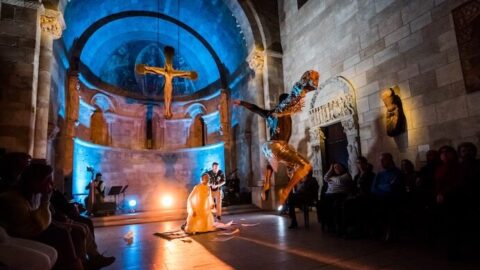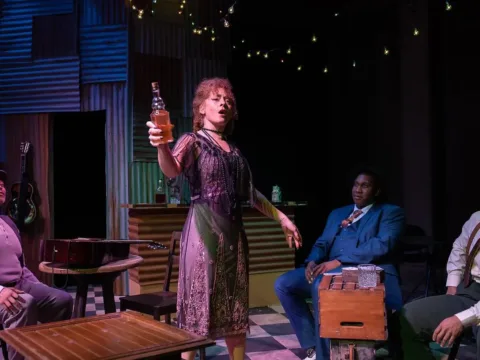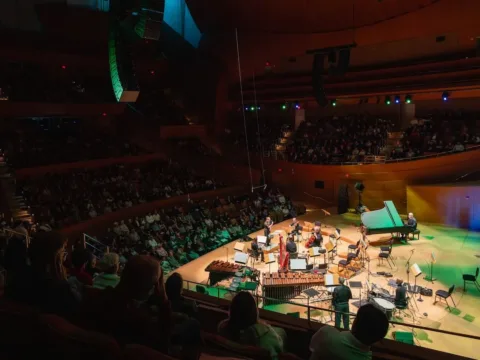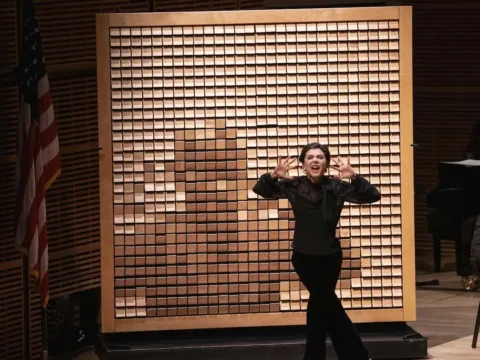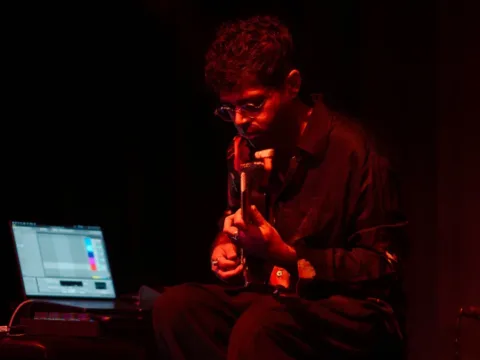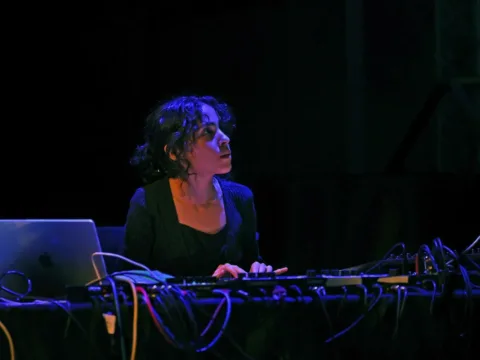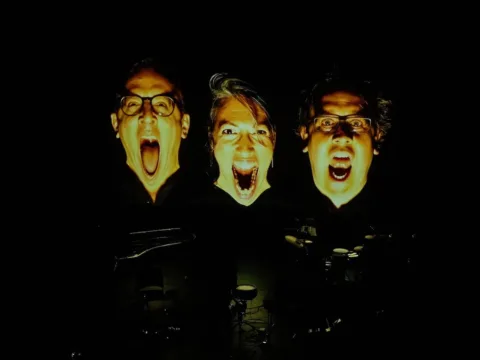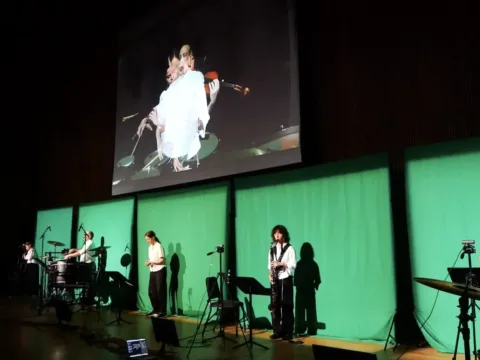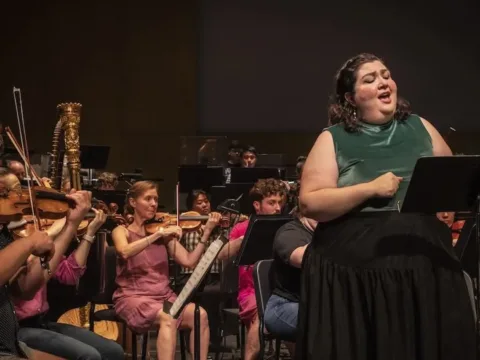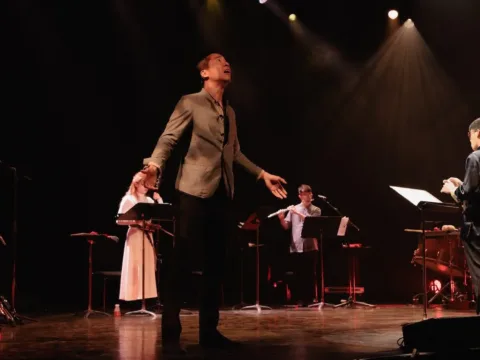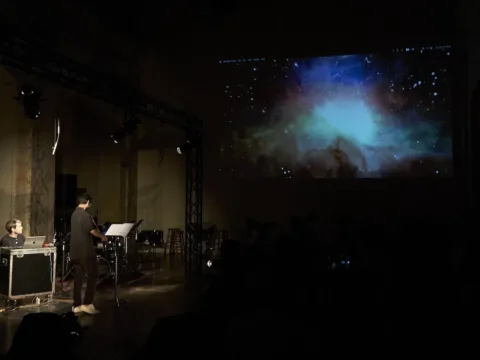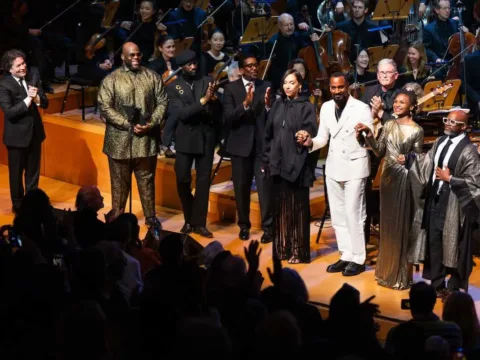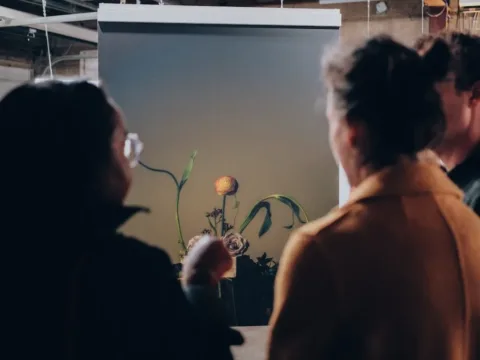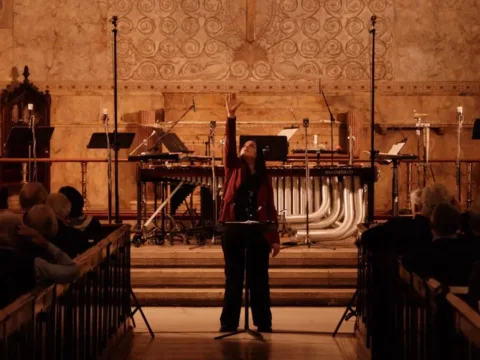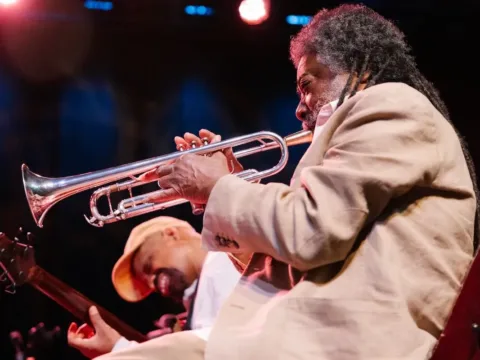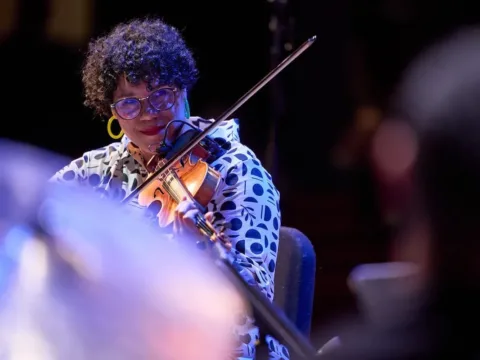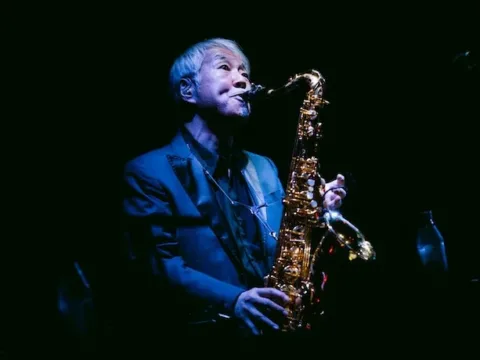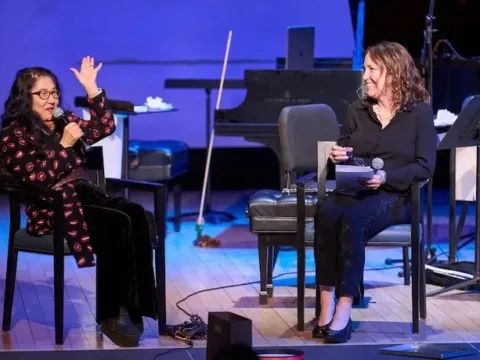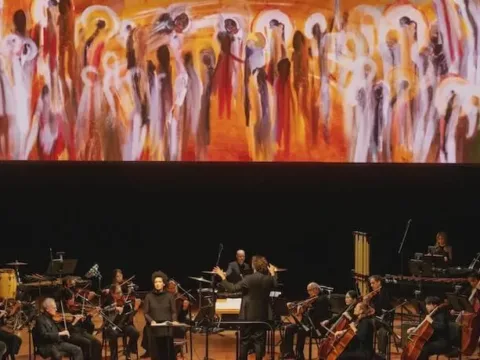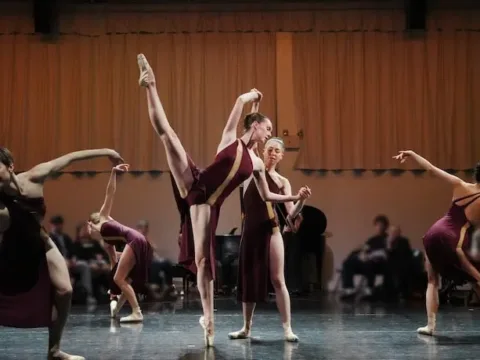In their stunning processional opera, co-creators Paola Prestini and Magos Herrera and director Louisa Proske present the story of Sor Juana, a 17th-century proto-feminist nun whose passion for knowledge pitted her against powerful men – and her own voracious intellect. Many of Sor Juana’s intellectual and political battles are operatic material, but Primero Sueño dramatizes her creative process as a radical act: she reconciled her creative doubts by believing that her work would echo across the ages, and Prestini and Herrera prove that true, honoring her vision as a triumph over the men who burned her books.
In this striking dialogue, it is fitting that Prestini and Herrera focus on Sor Juana’s process of writing her magnum opus poem, Primero Sueño. “For women,” wrote Audre Lorde, “poetry is not a luxury. It is a vital necessity of our existence… Poetry is the way we help give name to the nameless so that it can be thought. The farthest horizons of our hopes and fears are cobbled by our poems, carved from the rock experiences of our daily lives.”
Carved from rock experiences, indeed. The performance is intimately designed for The Met Cloisters, a museum reconstructed from four European structures and perched atop the furthest hill in Manhattan. Governed by the Metropolitan Museum of Art, The Cloisters houses 5,000 works of art from the 12th to 15th centuries. The structure provided a parallel to Sor Juana’s intellectual and emotional passage, and lit by thousands of electric candles, Herrera and Prestini gave the stones something modern and magical to absorb.
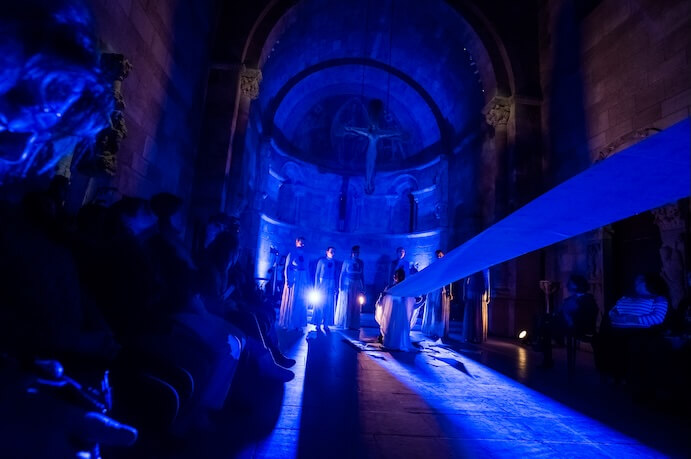
At the start of the performance, fully covered in white silk robes, the entrancing German vocal group Sjaella guides people into the first scene. We encounter Sor Juana in her study writing Primero Sueño surrounded by the nun chorus. What seems like a typical day is interrupted by an ominous vision, igniting doubts about the veracity of her endeavor. Although Sor Juana fights an Archbishop ferociously for her right to knowledge and scholarship, her internal dialogue continues to become more conflicted as she feels torn by the dualities of sleep/death, heaven/earth, and knowledge/hubris personified in visions of Greek, Roman, and Mexica deities dancing throughout the Cloisters.
Praying alone to the Virgin Mary, Sor Juana has a waking dream in which she fails to achieve her highest ambitions; Herrera offers a wrenching performance here of the intimate aria. Sor Juana quits her poetic project, only to receive a final apparition in the Cloisters’ largest chapel that turns her gaze toward posterity and refashions her idea of the afterlife. Throughout the ethereal piece, dancer Jorrell Lawyer-Jefferson’s embodiment of The Archbishop, Phaeton, and Quetzalcoatl grounded the surrealism with his own spectacular choreography and associate direction.
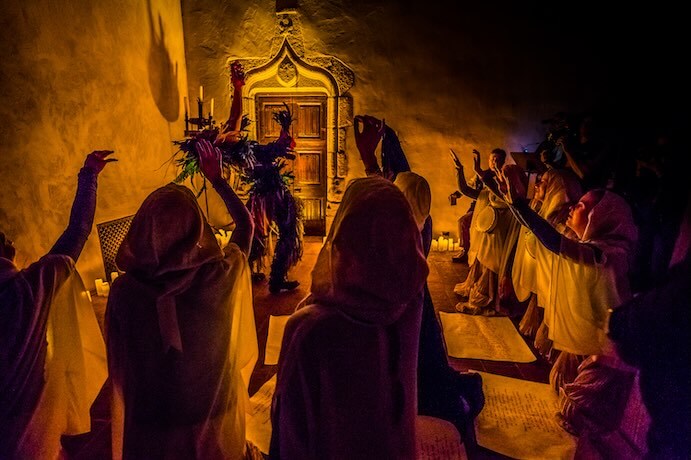
The opera’s predominantly choral and Baroque score, co-composed by Prestini and Herrera, only enhanced the meditative environment. Baroque music’s emotional immediacy and directness, full of vivid colors, stark contrasts, and suspended reflections, were the perfect dramatic soundscape. Imitating Sor Juana’s complex mind, the orchestration weaves folk, jazz, classical choral, and subtle electronic music into a rich and cohesive accompaniment that wafted through the Cloisters. The music is propelled by voices, but Sor Juana’s journey was underscored by Luca Tarantino (theorbo) and Celso Duarte (Paraguayan harp, Mexican jarocho harp, charango, and hand percussion). Herrera, one of the world’s great jazz and improvisatory vocalists, was fully unleashed to present a stupendous performance.
A significant portion of the opera’s artistic and advisory team represent Latin America and Mexico through their roles in government, NGOs, museum curation, scholarship, publishing, and the arts. Through this broad cultural support and expertise, Primero Sueño successfully positions Sor Juana as a contemporary feminist icon while remaining grounded in historical context. The piece is completely in Spanish, and although English subtitles were projected throughout the work, the total linguistic immersion coupled with Mexican Baroque music and mythology makes it clear that Sor Juana is not adapting to us; rather, we are embracing her mystical guidance.
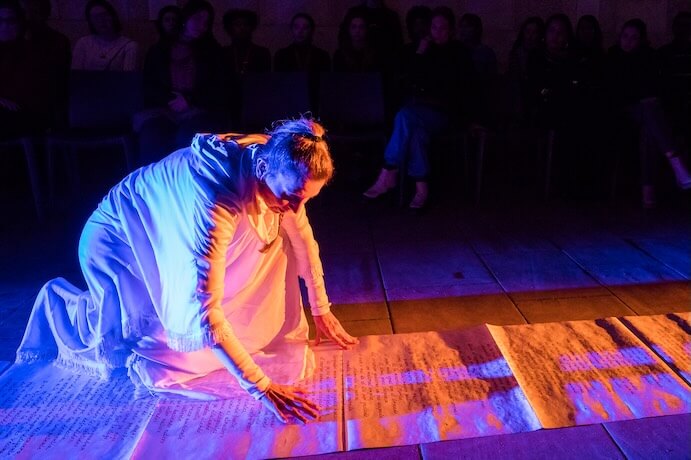
Proske’s direction utilized the full Cloisters space while shepherding the audience into specific locations, recreating Sor Juana’s experience of inner freedom and external constraints. But perhaps even more than the labyrinthine corridors, doorways symbolized Sor Juana’s journey. Innocent arches became portals for Death; small stone openings became personal portals for the audience-voyeurs; bland frames opened for Misogony, and grand Great Hall doors swung open for apparitions. David Herrera’s sculpture animation and masks, Andrea Lauer’s costume and wearable technology design, and Jorge Cousineau’s varied text and projections created critical counterpoints to the Eurocentric museum setting through shocks of rainbow feathers, wearable wire sculptures, and woven and backlit heartpieces.
The processional and site-specific nature of the work presented an enormous logistical challenge. The mobile lighting and projection teams — directed by Jiyoun Chang and Jorge Cousineau respectively — and audience guide teams were active throughout the entire opera as spaces were utilized multiple times. With the “fourth wall” already broken, it was a pleasant and egalitarian experience to witness the production team’s central contribution to the piece.
A proscenium presentation of Primero Sueño is hard to imagine; future stagings of this piece will have to reconsider how each new immersive setting can illuminate Sor Juana’s gentle power without overwhelming her story with the environment. The opera’s setting and sonic environment preserved cohesion in a fragmented experience of her story. And perhaps this is the point: we experience the duration of her struggle, we feel ourselves moving through her life, and Sor Juana victoriously breaks into our life.
I CARE IF YOU LISTEN is an editorially-independent program of the American Composers Forum, and is made possible thanks to generous donor and institutional support. Opinions expressed are solely those of the author and may not represent the views of ICIYL or ACF.
You can support the work of ICIYL with a tax-deductible gift to ACF. For more on ACF, visit composersforum.org.
